The vast plains of the Serengeti, the majestic crater of Ngorongoro, and the untamed wilderness of Tanzania – a safari adventure in Tanzania promises encounters with breathtaking landscapes and unforgettable wildlife. But dressing the part is crucial to immerse yourself fully in this experience.
Beyond style, your safari wardrobe is key to maximizing your comfort, safety, and ultimately, the memories you create. Let’s look at some essential information to craft the perfect safari capsule wardrobe, ensuring your Tanzania adventure is as thrilling as it is comfortable.
What to Wear on an African Safari
For a safari, your best bet is a wardrobe that blends functionality with style. Safari clothing should adapt to the ever-changing African environment. Here’s how to build a versatile capsule that covers all your needs:
Tops
Pack very breathable, quick-drying fabrics like cotton or linen. Long-sleeved shirts offer protection from the sun and pesky insects, while short-sleeved options are perfect for warmer days. Opt for neutral colors like khaki, beige, and olive that blend into the surroundings, nothing too bright. Make sure you have a pocket to accommodate some essentials.
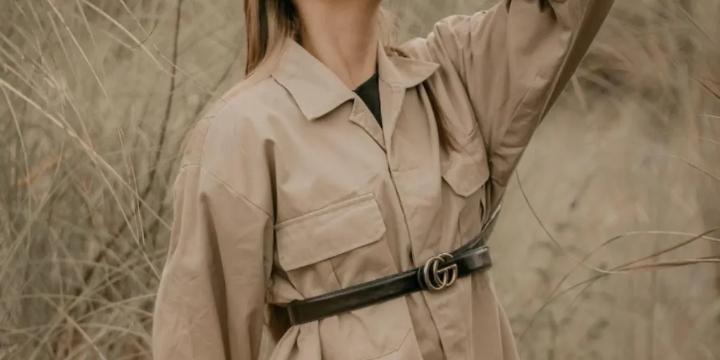
Pants
You need to be able to walk comfortably and protect yourself from insects and harsh sunlight. Besides, the temperature fluctuations are drastic, so the pants should also be breathable. Convertible pants with zip-off legs are a space-saving godsend. They transform from long pants for sun and insect protection to comfortable shorts for hotter moments. Try to go for neutral colors and always prioritize comfort over fashion.
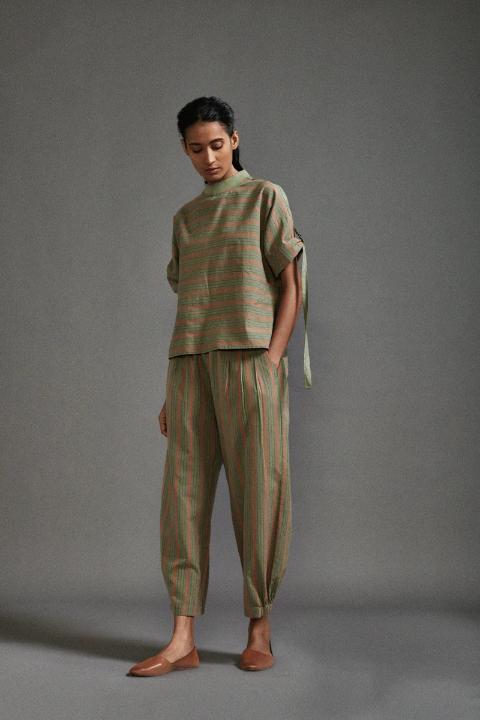
Jackets
A good jacket should protect you against dust, cold, rain, and certain predatory insects. A light, water-resistant jacket is a must for unpredictable showers or chilly mornings. A safari vest with pockets for storing essentials like binoculars and sunscreen is quite popular.

Dresses
While it’s always good to protect your legs, dresses can be a good option too. Just ensure you pack a breezy, long-sleeved dress in a neutral shade. This allows for comfortable movement and provides sun protection as well. Try to cover your legs with leggings while walking.
Shoes
Comfortable, closed-toe shoes are essential for safari. Wear sturdy hiking boots or walking shoes with good ankle support for uneven terrain. You should avoid sandals or flip-flops, as they offer little protection and support.
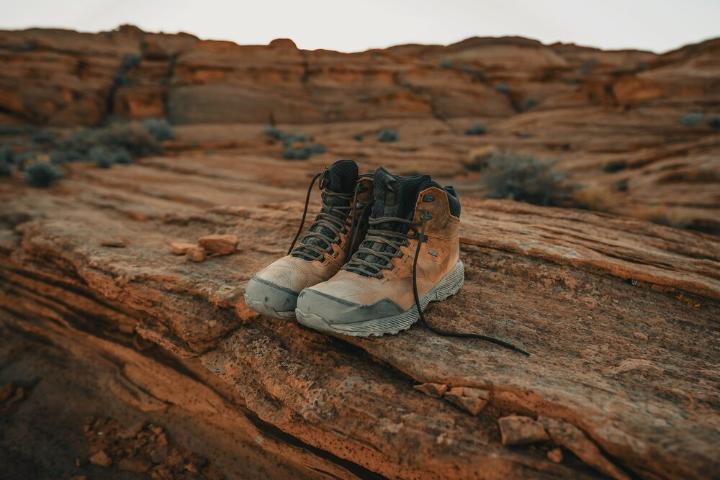
Accessories
Buy a wide-brimmed hat to shield you from the sun, and a Buff (a multifunctional scarf) to protect your neck and face from dust and insects.
Pro tip, When packing, consider the time of year for your safari. During the dry season (June to October), prioritize lightweight, breathable clothing. If your trip coincides with the wet season (November to May), pack a rain jacket and quick-drying pants.
What Would Be the Best Material/Colour to Buy?
When selecting safari gear, emphasize natural, breathable fabrics such as cotton and linen. These fabrics promote air circulation, helping you stay cool and comfortable in the African heat. Synthetic fabrics can trap heat and cause you to sweat more. Choose environmentally friendly apparel produced from recycled materials. While neutral hues like khaki and olive are typical safari colors, don’t be afraid to add a unique touch. Consider using earthy tones such as red or teal, or a patterned fabric in muted hues. Avoid using bright colors or white; they might attract insects and seem too sharp against the natural environment.
Safari Essentials
Preparing for a safari is more than simply bringing the appropriate clothing. Here are some essential essentials to guarantee a safe, comfortable, and fun adventure:
Binoculars: A decent set of binoculars is required for observing animals at a distance. For maximum convenience, use a tiny, lightweight type.
Camera: Use a high-quality camera to capture memories. Make sure it has a decent zoom lens for taking close-up photographs of animals. Don’t forget your additional batteries and memory cards.
Sunscreen: Use a high-SPF sunscreen to protect your skin from Africa’s fierce sun. Reapply often, particularly after swimming or sweating.
Insect Repellent: Use a powerful repellent to keep annoying mosquitos and other insects away. Look for a product that has DEET or other powerful chemicals.
Hat and glasses: A wide-brimmed hat provides crucial shade, while sunglasses shield your eyes from the harsh sun.
Water Bottle: Staying hydrated is essential. Bring a refillable water bottle to use during the day.
First Aid Kit: A basic first-aid kit should include bandages, antiseptic wipes, pain relievers, and personal prescriptions.
A field guide to African wildlife will help you identify the species you observe on your safari, improving your experience.
Protection from Heat, Cold, and Rain
Africa’s weather may be erratic, with blistering heat throughout the day, cool mornings and evenings, and rare rain showers. Here’s how to prepare for these different conditions:
Heat: To protect yourself from the hot sun, wear lightweight, breathable clothing that covers your skin. Long sleeves and pants made of moisture-wicking materials will keep you cool while protecting you from sunburn and insects. Don’t forget your wide-brimmed hat, sunglasses, and lots of sunscreen. Hydration is essential, so always have a water bottle.
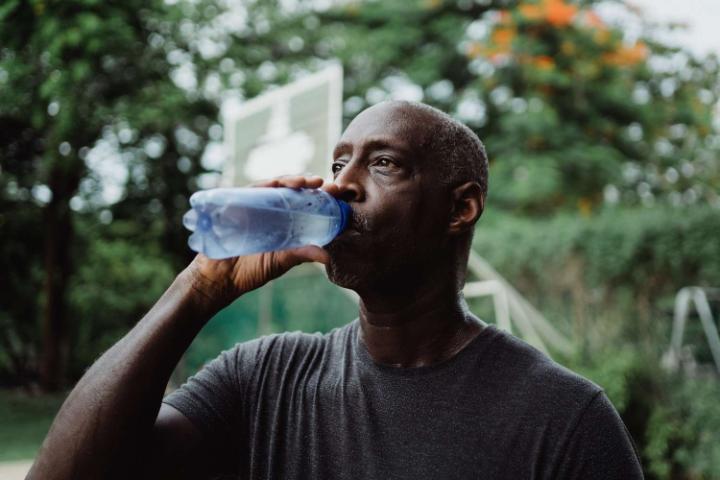
Cold: Early morning and late game drives may be unexpectedly chilly, particularly in open cars. Bring a thick fleece or down jacket, and consider thermal layers for extra warmth. A comfortable scarf and gloves may also come in handy.
Rain: A lightweight, waterproof jacket is essential for sudden rains. Look for a packable raincoat you can easily stow away in your daypack. Waterproof footwear can also be a lifesaver in such conditions.
Image Credits: India Hikes
Layering for Different Times of the Day
Layering is the key to keeping comfortable all day on a safari. Here’s how you can perfect it:
- Inner layer: Start with a moisture-wicking base layer to keep sweat away from your skin. This is especially critical on hot days.
- Mid Layer: For warmth in the chilly mornings and nights, layer on a lightweight fleece or sweater. This layer should be simple to remove as the temperature rises.
- Outer Layer: Use a windproof and waterproof jacket to protect yourself from rain and cold winds. This layer should be lightweight and packable to transport readily when not in use.
Packing Tips for a Safari
Efficient packing is essential for a smooth safari experience. Follow these tips to keep your luggage organized and manageable:
Using Packing Cubes
Packing cubes transform the way you organize your safari kit. They help you:
Stay Organized: Divide your clothing into cubes for easier access. For example, store clothes in one cube, pants in another, and undergarments and socks in a smaller one.
Save Space: Compress your clothes to maximize your baggage space. Packing cubes can also help keep your garments from moving while traveling.
Simplify packing and unpacking: Arrange everything in a way that you can find what you need quickly without having to go through your entire luggage. This is very handy when transferring between lodges or camps.
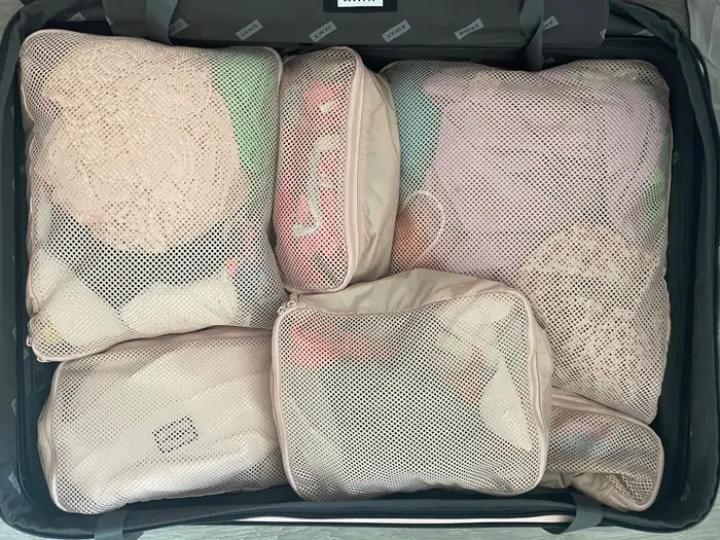
Keeping Your Luggage Lightweight
Keeping your luggage minimal is important, especially if you’re flying between safari sites in small planes. This is how you do it:
Stick to the basics: Concentrate on adaptable, multi-functional apparel that can be combined and matched. Remove needless goods and focus on comfort and practicality.
Travel-sized essentials: Pack travel-sized toiletries to save space and weight. Many hotels and accommodations offer basic amenities, so you may not need to carry everything.
Limit Electronics: Only bring the needed electronics and accessories. A camera, phone, and essential chargers should be plenty. Consider using a portable power bank to charge on the move.
Choose Lightweight Gear: Look for clothes and gear that is lightweight and packable. Modern textiles and materials may provide the same level of protection and comfort while remaining lightweight.
Recommended Products
When it comes to getting ready for your safari adventure, selecting the correct brands and products can make all the difference. Here’s some reliable advice to ensure you’re prepared for your African safari:
Clothing Brands: Choose well-known outdoor brands such as Columbia, North Face, and REI. These brands offer a diverse selection of safari-appropriate clothes, from lightweight shirts and slacks to robust coats and accessories.
Footwear: Invest in reliable hiking boots or trail shoes like Merrell, Keen, or Salomon. These manufacturers promote comfort and durability, which are necessary for long days in the African wilderness.
Binoculars: Choose high-quality binoculars from brands such as Nikon, Bushnell, or Vortex. A decent set of binoculars improves your wildlife viewing experience and allows you to observe animals from a distance.

Camera Gear: Consider cameras and lenses from Canon, Nikon, or Sony to capture those amazing safari moments. Find a camera with a strong zoom lens to get close to the action.
Sun Protection: To protect your skin from the African sun, choose trusted sunscreen products with high SPF ratings, such as Neutrogena, Banana Boat, or Coppertone.
Hats and glasses: Remember to carry a wide-brimmed hat and polarized sunglasses for extra protection.
Insect Repellent: To keep mosquitoes and other insects at bay, stock up on repellents from brands such as OFF!, Repel, and Sawyer. DEET-based formulations are quite effective in tropical conditions.
Safari Etiquette and Dress Code
Respecting local customs and following safari etiquette is vital for a pleasant and culturally sensitive trip. Here’s what you should know.
Cultural sensitivity
Dress Modestly: Avoid wearing clothes that may be deemed exposing or indecent while dealing with locals or visiting cultural places to show respect for local customs.
Covering Your Shoulders and Legs: In many African cultures, covering your shoulders and legs is considered respectful. Choose lightweight, long-sleeved shirts and slacks, particularly in rural locations.
Respecting local customs
Avoid Camouflage: In certain areas, wearing camouflage clothes is connected with military people and could be considered insulting or improper. To fit in with the environment while avoiding offense, stick to neutral hues.
Preparing for Different Safari Activities
Each safari activity requires specific preparation to ensure a safe and enjoyable experience. Here’s what you need to know about different types of safari activities:
Game Drives
Comfortable Clothing: Wear comfortable clothing suitable for sitting for a long time. Layers are essential for adapting to changing temperatures throughout the day.
Walking Safaris
Sturdy Footwear: Opt for sturdy, closed-toe shoes or hiking boots with good traction. Comfortable, lightweight clothing that allows for easy movement is also essential.
Night Safaris
Warm Layers: Nights in the African bush can get cold, so pack warm layers like a fleece jacket or thermal clothing. A headlamp or flashlight is also handy for navigating in the dark.
Health and Safety Considerations
Prioritizing health and safety is crucial for a successful safari. To protect against mosquitoes and other biting insects, use insect repellents containing DEET or other proven ingredients. Apply them regularly, especially during dawn and dusk, when insect activity is highest.
Also, regularly apply sunscreen with a high SPF rating, even on cloudy days. Don’t forget to wear a wide-brimmed hat and sunglasses to protect your face and eyes from the sun’s harmful rays.
Key Takeaways
Your safari wardrobe should prioritize comfort and functionality. Breathable fabrics, like cotton and linen, and versatile clothing items are essential to handle the changing African environment. Stick to neutral colors such as khaki, beige, and olive to blend into the natural surroundings. Bright colors can attract insects and disrupt the wildlife experience. Master the art of layering to stay comfortable throughout the day. Start with moisture-wicking base layers, add warmth with a lightweight fleece, and protect against weather with a windproof and waterproof jacket.
Don’t forget crucial accessories like a wide-brimmed hat, polarized sunglasses, a water bottle, and a reliable insect repellent. These items will protect you from the sun, insects, and dehydration. Utilize packing cubes to stay organized and keep your luggage light. Focus on multi-functional clothing and travel-sized essentials to simplify your packing.
Be respectful of local customs by dressing modestly, especially in rural areas. Avoid camouflage patterns, which can be associated with military personnel in some regions. Protect yourself from the sun and insects with high-SPF sunscreen, a wide-brimmed hat, and DEET-based insect repellent. Prioritize your health to enjoy your safari to the fullest.


